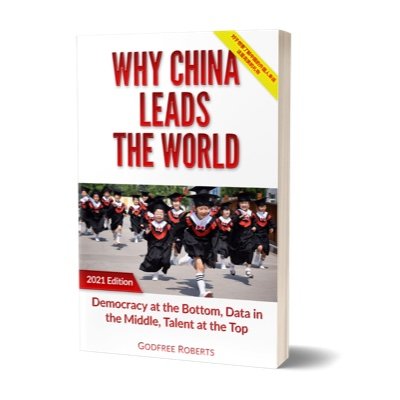One thing that makes China’s industrial policy so interesting to study is how extensive it is. You can pick any key sector or subsector and go down a rabbit hole of state support: railways for Guinean bauxite, R&D for GaN and SiC chips, compute vouchers for AI startups, etc.
@kyleichan The canonical book on China’s economy states that this mostly began post-2008. Do you agree?
@kyleichan reinforces argument it's simply incompatible with western democracies, which by their nature introduce friction into developing so many state subsidies. there's no way to "compete" on those variables without eliminating western democratic/pluralist norms. decoupling happening.
@kyleichan There are 1200 companies involved in space laser communications alone.
@kyleichan > The first national search engine for economic development subsidies & other forms of government financial assistance to business > Subsidy award entries: 722,000 (582,000 state/local; 140,000 federal) Subsidy programs: 1,894 (1,813 state/local; 73 federal) Link below
@kyleichan Exactly. It's not just the scale, but the orchestration. The state acts as a system architect: funding basic R&D, building strategic infrastructure abroad to secure supply chains, and providing targeted demand (vouchers) to pull innovations to market. It's a full stack strategy.
@kyleichan One thing that's funny about me is that in the Chinese political spectrum, would be considered center-right and a neoliberal. I actually think that the main focus on the economy should be markets, and that the main role of the govt is to fix market failures. So ironically, I
@kyleichan What are the key features that enabled this success v/s everywhere else? Genuinely curious..
@kyleichan And at the end of it you often find a market entrepreneur that isn't getting any of the cash. The big thing about Chinese industrial policy is that a lot just depends on policy direction from on high. Even a yellow light is sometimes enough.
@kyleichan You can do a lot with the pension fund of 500 million people.
@kyleichan Well, they talk to those in the trenches as well as futurists at the very top who see coming trends. This allows the state to plug holes in the nets being weaved so they can eventually catch fish. Of course they replicate the effort in different provinces to maintain competition.
@kyleichan Every ride share has to buy a Chinese car which props up that industry.
@kyleichan Suggest resources that gives comprehensive understanding of Rapid China's industrialisation
@kyleichan Must be nice to have a competent government.
@kyleichan They have industrialized industrial policy itself
@kyleichan The party leads everything. 党领导一切
@kyleichan Do you have any good book recommendations about Chinese industrial policy, industrial growth etc?
@kyleichan US subsidizes the medical and drug industries, aerospace, weapons and now semiconductors...
@kyleichan To catch up with hi-tech you need decades of investment and may get no return in short term. No private capital would do that. State investment is the only way. However, most "democratic" countries can't make the policy consistent for 50 years. China can.
@kyleichan What are your best booos that describe china policy and how he company provincial government - central government - banking system work in tandem to create these incredibly competitive and dominant industries
@kyleichan Majority of these industry policies r initiated & implemented by local gov rather rhan central gov. There r deep institutional motives of meritocracy, selection instead od election. It is totally different from Western democracy system.
























